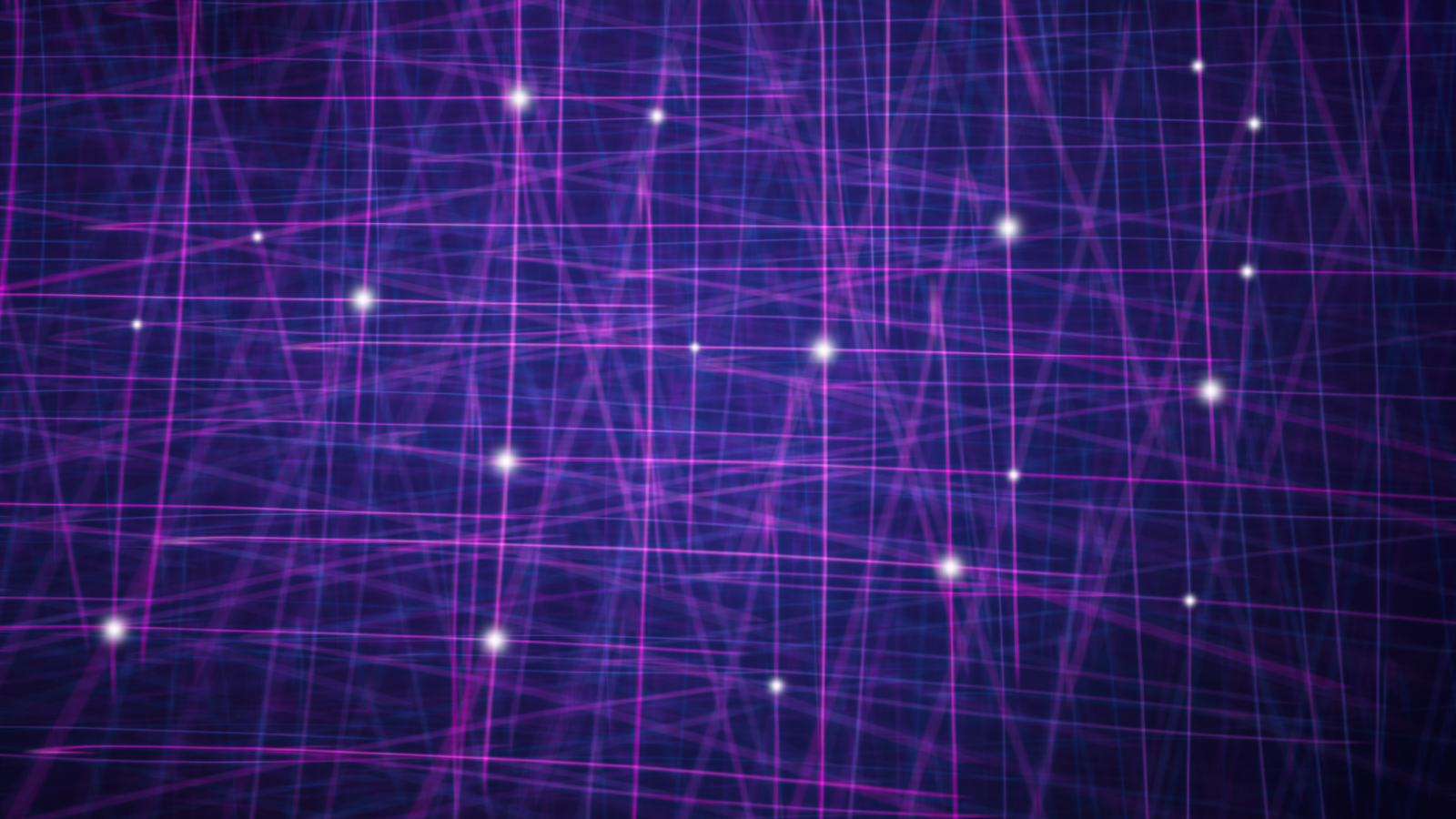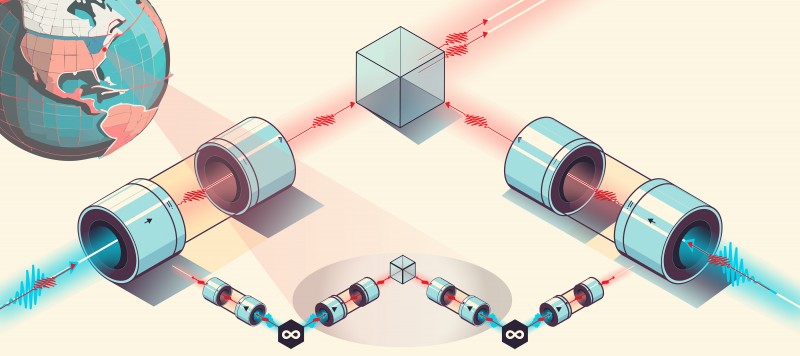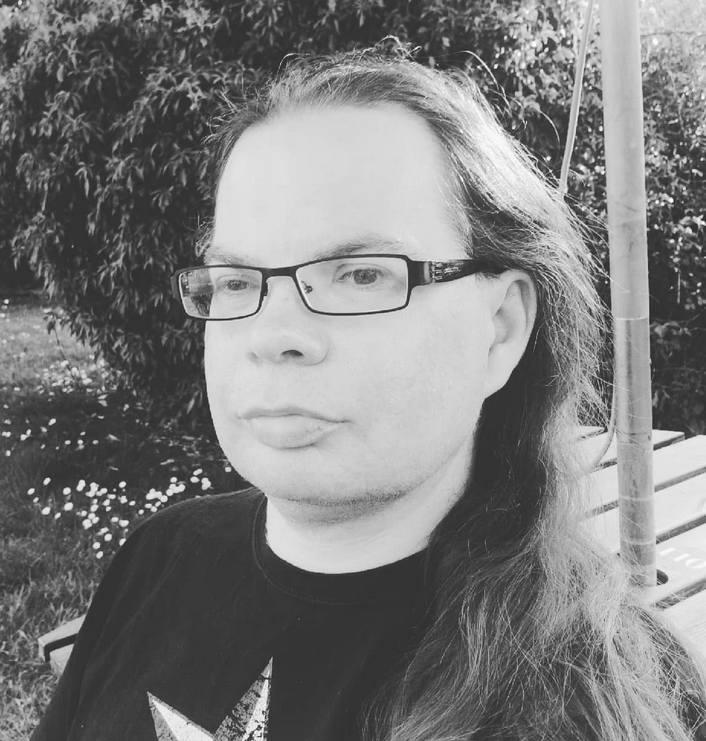'Quantum memory breakthrough' may lead to a quantum internet
A new technique in quantum storage that operates at room temperature could pave the way for a quantum internet.

We're now one step closer to a "quantum internet" — an interconnected web of quantum computers — after scientists built a network of "quantum memories" at room temperature for the first time.
In their experiments, the scientists stored and retrieved two photonic qubits — qubits made from photons (or light particles) — at the quantum level, according to their paper published on Jan. 15 in the Nature journal, Quantum Information.
The breakthrough is significant because quantum memory is a foundational technology that will be a precursor to a quantum internet – the next generation of the World Wide Web.
Quantum memory is the quantum version of binary computing memory. While data in classical computing is encoded in binary states of 1 or 0, quantum memory stores data as a quantum bit, or qubit, which can also be a superposition of 1 and 0. If observed, the superposition collapses and the qubit is as useful as a conventional bit.
Quantum computers with millions of qubits are expected to be vastly more powerful than today's fastest supercomputers — because entangled qubits (intrinsically linked over space and time) can make many more calculations simultaneously.
Related: How could this new type of room-temperature qubit usher in the next phase of quantum computing?
As the name implies, the quantum internet is an internet infrastructure that relies on the laws of quantum mechanics to transmit data between quantum computers. But we need quantum memory for a quantum network to function. Because qubits adopt a superposition of 1 and 0, rather than either binary state as in classical computing, they can store and transmit more information with far greater density than conventional networks.
Sign up for the Live Science daily newsletter now
Get the world’s most fascinating discoveries delivered straight to your inbox.
“To get these fleets of quantum memories to work together at a quantum level, and in a room temperature state, is something that is essential for any quantum internet on any scale. To our knowledge, this feat has not been demonstrated before, and we expect to build on this research,” said lead author Eden Figueroa, professor of physics and astronomy at Stony Brook University, in a statement.
Building a network for quantum computing
Quantum networks built in recent years have needed to be cooled to absolute zero to operate, which limits their usefulness. But scientists from Stony Brook University developed a method to store two separate photons and – most importantly – successfully retrieve their quantum signature. They achieved this at room temperature by storing photons in a rubidium gas.
This makes it more viable than previous experiments in designing and deploying a quantum internet in the future. However, they could only store the photons in this experiment for a fraction of a second, while storing qubits at cryogenic temperatures normally means they can last for more than an hour.

“The actual selling point of this was that they were able to take two independently stored photons, retrieve them at the same time, and interfere them,” Daniel Oi, a professor in quantum physics at the University of Strathclyde, told Live Science. “You get what’s called a HOM dip, or a Hong-Ou-Mandel dip, which is a characteristic quantum signature indicating that these two photons were identical.”
As well as being faster, quantum communications are inherently secure — while classical communications can be intercepted or manipulated. This is because any attempts to intercept and read information transmitted across the quantum network equates to observation — which would collapse the superposition of the qubits moving through the circuit.
This is an active field of research and a race is underway to develop the technologies that will help us build a quantum internet. In 2022, researchers in Switzerland stored a single photon using a similar method. That same year, China transmitted signals using quantum entanglement between two memory devices located 12.5 kilometers apart.
The next stage is to develop a method for detecting when a quantum signal is ready to be retrieved, without destroying the properties of the signal through direct observation. Achieving this would pave the way for quantum repeaters, which are devices that can extend the range of a quantum signal. This would be a key precursor to a large-scale quantum internet.
“One of the holy grails of quantum memories is ‘How do you detect that you’ve actually stored a photon, without destroying the quantum properties of that photon, and do it in a way that is efficient and reliable?’,” said Oi.
Peter is a degree-qualified engineer and experienced freelance journalist, specializing in science, technology and culture. He writes for a variety of publications, including the BBC, Computer Weekly, IT Pro, the Guardian and the Independent. He has worked as a technology journalist for over ten years. Peter has a degree in computer-aided engineering from Sheffield Hallam University. He has worked in both the engineering and architecture sectors, with various companies, including Rolls-Royce and Arup.










